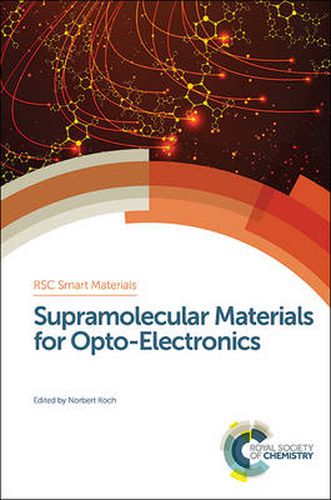Readings Newsletter
Become a Readings Member to make your shopping experience even easier.
Sign in or sign up for free!
You’re not far away from qualifying for FREE standard shipping within Australia
You’ve qualified for FREE standard shipping within Australia
The cart is loading…






For years, concepts and models relevant to the fields of molecular electronics and organic electronics have been invented in parallel, slowing down progress in the field. This book illustrates how synthetic chemists, materials scientists, physicists, and device engineers can work together to reach their desired, shared goals, and provides the knowledge and intellectual basis for this venture.
Supramolecular Materials for Opto-Electronics covers the basic principles of building supramolecular organic systems that fulfil the requirements of the targeted opto-electronic function; specific material properties based on the fundamental synthesis and assembly processes; and provides an overview of the current uses of supramolecular materials in opto-electronic devices. To conclude, a what’s next section provides an outlook on the future of the field, outlining the ways overarching work between research disciplines can be utilised.
Postgraduate researchers and academics will appreciate the fundamental insight into concepts and practices of supramolecular systems for opto-electronic device integration.
$9.00 standard shipping within Australia
FREE standard shipping within Australia for orders over $100.00
Express & International shipping calculated at checkout
For years, concepts and models relevant to the fields of molecular electronics and organic electronics have been invented in parallel, slowing down progress in the field. This book illustrates how synthetic chemists, materials scientists, physicists, and device engineers can work together to reach their desired, shared goals, and provides the knowledge and intellectual basis for this venture.
Supramolecular Materials for Opto-Electronics covers the basic principles of building supramolecular organic systems that fulfil the requirements of the targeted opto-electronic function; specific material properties based on the fundamental synthesis and assembly processes; and provides an overview of the current uses of supramolecular materials in opto-electronic devices. To conclude, a what’s next section provides an outlook on the future of the field, outlining the ways overarching work between research disciplines can be utilised.
Postgraduate researchers and academics will appreciate the fundamental insight into concepts and practices of supramolecular systems for opto-electronic device integration.